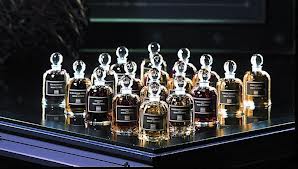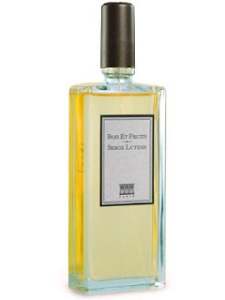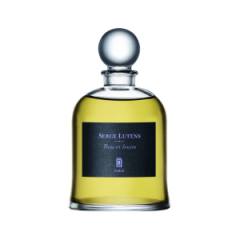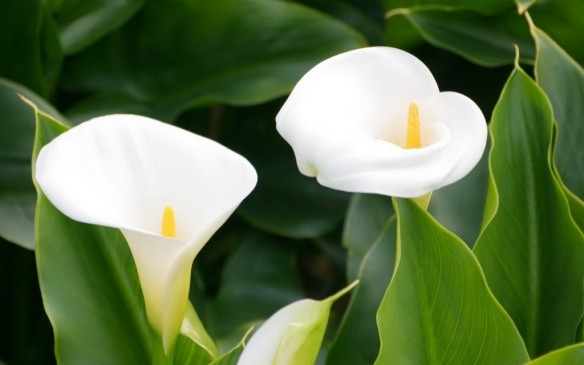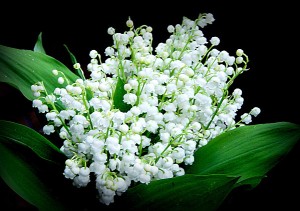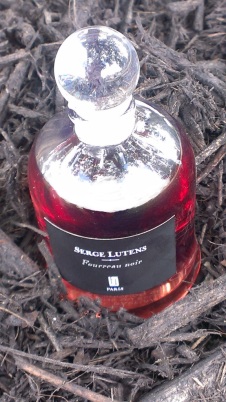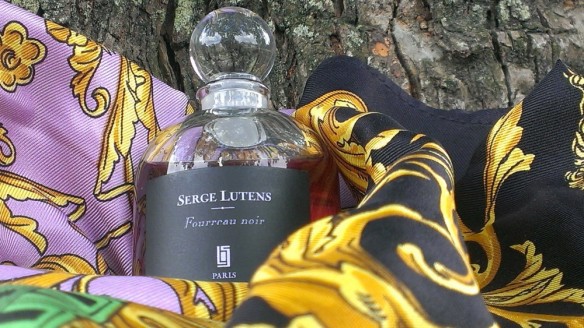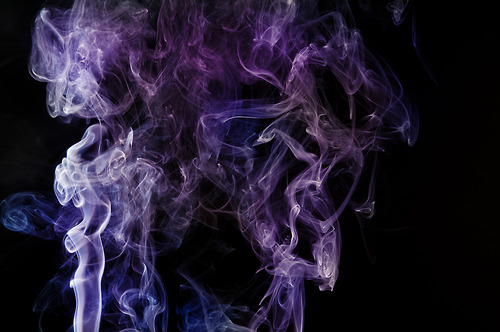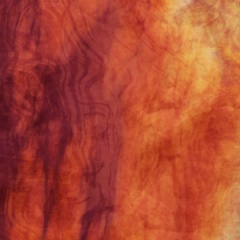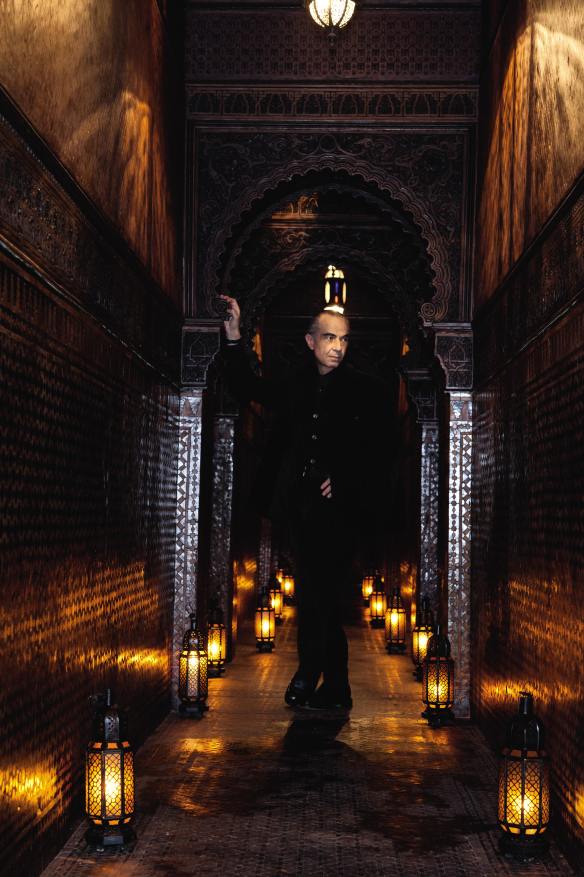A funny thing happens when a Serge Lutens addict visits the mothership in Paris. A profusion of scents, sensations, sights, and lust floods over you, leaving you rather at a loss to make objective decisions on the spot. Or perhaps that was merely my experience in visiting Les Palais Royal. In any event, it took me two visits to make up my mind about what to buy, and one of the main bell jar candidates was Bois et Fruits.
In the end, I walked out with Fourreau Noir and De Profundis, but I kept thinking about Bois et Fruits. I know it is a favorite of Serge Lutens’ personal assistant, the Paris boutique manager, Suleiman, with its blend of wooded, spiced, and candied fruits. Upon my return, I took the wild chance of looking up the fragrance to see if this expensive $310 bell-jar might possibly have been released in another form at some point. After all, Rousse and some other Paris Bell Jar exclusives seemed to have come out in a cheaper, limited-edition 50 ml spray bottle from time to time, so perhaps Bois et Fruits as well? To my joy, it had. And not only that, but the $200 retail price in the U.S. was significant undercut by discount retailers who offered it for around $82. Score! I’ve never hit the “Buy” button quite so quickly. Bois et Fruits is not the perfect scent, and it has some flaws which make it hard for me to swallow at $310, but it’s certainly fantastic and perfect enough for $82.
Having started at the end of the tale, let’s go back to the beginning. Bois et Fruits is an eau de parfum that was created by Christopher Sheldrake, and released in 1992. It is one of a quartet of “Bois” (or wood) fragrances to follow from Lutens’ ground-breaking, debut perfume, Féminité du Bois for Shiseido. The latter is a highly admired, much-loved fragrance which essentially served as the mothership for all the Bois siblings which followed.
Luca Turin, the famous perfume critic, has a very useful explanation of the history of the Bois line, their perfume structure, and how Bois et Fruits differs from both its mother and its siblings. In Perfumes: The A-Z Guide, he talks of how the “woody-fruity structure of Féminité du Bois was first devised by the perfumer Pierre Bourdon, … and then passed on to perfumer Christopher Sheldrake, who developed it with Lutens… to keep it as dark and transparent as possible.” When Lutens decided to open his own perfume house, he needed more perfumes for his line, and decided to do variations on his uber-successful Féminité.
Enter the technique known as overdosage, widely propagated by Bourdon, in which a backstage component in one perfume is moved to the forefront in a new composition, a sort of rotation in perfume space. From Féminité du Bois came four variations, three of which create new effects by bold-typing one of the components of the original: musk (Bois et Musc), fruit (Bois et Fruits), amber (Bois Oriental).
Serge Lutens explicitly states that Bois et Fruits is the fruit-dominated child of Feminité du Bois:
Like candied fruit.
This is another descendant of Féminité du bois, whose base notes contained a complex blend of several types of plums. Here, unadulterated, it’s like candied fruit.
It’s an accurate assessment, but it is only part of the story. It leaves out the important counter-balance to those sweetened fruits: the spices and wood. Luckyscent puts the woods front and center at the start of its description of Bois et Fruits:
A cornucopia of luscious woods and succulent fruits, Bois et Fruits is what we think Paradise would smell like…We are addicted to the candied cedar note in the heart of the fragrance. Surrounded by ripe, honeyed plums, figs, apricots and peaches, the woody note of Bois et Fruits is absolutely delectable. We would not call this darkly-sensual concoction gourmand in an obvious manner, but there is a sweet, lush quality in Bois et Fruits that is nothing short of mouthwatering. A blissful, endlessly enjoyable bled that is as sensuous as it is comforting, Bois et fruits is divine!
As always, Serge Lutens keeps the notes in his fragrance secret, so it’s a guessing game to know what is involved. Fragrantica, Luckyscent, and Surrender to Chance estimate that Bois et Fruits contains:
cedar, plum, fig, peach and apricot.
Barney’s tosses in cinnamon and Turkish rose, but doesn’t think there is apricot. I would include a lot more than that. To my nose, the notes in Bois et Fruits would be, in order of importance:
Plum, Peach, Cedar, Cumin, Apricot, Cloves, and Figs. Possibly, vanilla, almonds, and either licorice or anise.
Bois et Fruits opens on my skin with the dripping juices of sun-sweetened peaches, followed by plums and the tiniest hint of apricots. The fruits are infused with a distinct, definite note of cumin, and something strongly resembling chewy, black licorice. The entire bouquet is cocooned by dry, dusty cedar, then softened with what I’d swear is a touch of almond-y vanilla. In the distance, the fig flits about, simultaneously a bit leathered and quite milky. The whole thing is a very soft, airy cloud that radiates out by a foot in the opening minutes, but soon softens to something tamer.
I enjoy the sweetness of the fruits so much that I sprayed Bois et Fruits onto my other arm during my test for this review, and I was completely taken aback to see that the fragrance had quite a different opening. I generally stick to one arm for all my tests, out of some odd thought about scientific conformity, but maybe that idea isn’t so weird after all, as the notes in Bois et Fruits were all jumbled up in a different order and with different strengths.
While the two scents soon ended up in the same place, on my other arm, Bois et Fruits opened with a very cognac-y, boozy note, followed by peaches, dusty cedary, and sweet, light, almost osmanthus-like apricots. The cedar was strong and pronounced, but there wasn’t a lot of plum at first. And there was absolutely no cumin at all — to the point that I thought I’d gotten it all wrong, until it suddenly popped up after about eight minutes. There was also no any licorice, almond, or fig tonalities, and very little vanilla. On the other hand, there was a milky anise element that flitted in and out, and anise is related to licorice. In any event, the two versions end up in the same place after about 20 minutes, so the minor differences aren’t significant in the long run, and I’ll just stick to writing about the version on the arm that I usually use for testing.
After 10 minutes, the notes seamless blend into each other. The fruits are on top, and the woods are diffused throughout, but in the base, the cumin adds a soft, muffled growl. It’s not a sweaty note like body odor, the way cumin can sometimes be, but it’s definitely a subtle touch of animalism and light “skank.” It works subtly from afar to add complexity to what would otherwise be primarily a two-pronged scent. I’ve seen one person describe the cedar as a “sweaty” note, but I would bet my bottle of Bois et Fruits that there is the cumin in the fragrance. For the most part, it’s a dusty note, like the powdered kind you’d find in a spice market, but with a distinct earthiness underneath. I have to admit, it’s my favorite part of the fragrance, even though I’m not usually enamoured by cumin. Something about the spicy dryness and earthy muskiness adds a brilliant counter-balance to the sweetened juices of the fruits, while simultaneously accentuating the dryness of the cedar.,
Soon, a subtle creaminess starts to stir and rises to join the top notes. It’s not vanilla or almonds, but neither is it purely milky fig, either. It’s like a teaspoon of ice-cream flecked with sweetness, as if the lactonic qualities of the fig had melded with the dryish vanilla to create the impression of textural creaminess. I still wonder about the black licorice note that I initially detected because, at the same time as the creaminess, there seems to be some sort of milky white anise lurking about.
About 30 minutes in, there is an accord which strongly resembles parts of Serge Lutens‘ Serge Noir, a fragrance dominated, in part, by cloves and cumin. Christopher Sheldrake and Serge Lutens reportedly worked on Serge Noire for more than 10 years, and it was released in 2008. It wouldn’t surprise me one bit if the cumin-clove-cedar trio in the 1992 Bois et Fruits was later “overdosed” in the way that Luca Turin describes above to become the foundation for Serge Noire. The difference is that the trio are much more subtle and balanced in Bois et Fruits, while they’re tripled in strength in Serge Noire. In any event, both my arms are most definitely radiating cloves, but it’s so well-blended that, from afar, the whole thing merely translates to dry, brown spices.
The unusual thing about Bois et Fruits’ overall development is how the notes never seem to stay in the same place from one minute to the next. It’s like a horse race where several contenders are all racing neck-and-neck near the finish line. Sometimes the Peach-Plum horse takes the lead and dominates, but the next minute, it’s the Clove-Cumin chestnut horse, and three minutes after that, it’s the Cedar stallion. Trailing far, far behind is the vanilla, looking like just a speck in the distance.
About 2.5 hours in, the horse race looks a little different. The clove has faded away, and the cumin softens to a dryly spiced woodiness with a very earthy feel. The cedar adds a similarly dry touch to counter the fruits which are primarily just plum now, with much weaker amounts of peach. The apricot never really showed up on my skin, beyond the opening minutes, and the almond note didn’t last much longer. What is more noticeable throughout is the muskiness lingering at the edges. It melts into the cumin’s earthiness, evoking the image of heated skin. To be precise, a guy’s skin under layers of thick, winter clothing after he’s exerted himself. Let me be clear: it does not smell fetid, and there is absolutely no impression of ripe body odor or smelly armpits, but there is a subtle sweatiness that evokes warmed, musky skin.
An hour later, around the 3.5 hour mark, Bois et Fruits is a discrete, very soft sheath of dark brown silk. Yet, the scent is still strong up close, and tendrils of spiced plum occasionally float in the air around you. It’s an airy, gauzy, balanced blend of plum, cedar, cumin, with just a touch of peach. Slowly, Bois et Fruits grows more abstract, the cumin and peach fade away, and the remaining notes lose their shape or distinctness. In its final moments, Bois et Fruits is merely plummy sweetness with a hint of dry woodiness. All in all, it lasted just a hair above 8.75 hours on my skin with 3 sprays from an actual bottle (as opposed to an atomizer). Through out it all, Bois et Fruit evoked images of an autumnal forest filled with trees bearing heavy, ripe fruits in a colour palette of red, orange, and dark brown softness.
On Fragrantica, the perfume has received mixed reviews. Judging by the longevity votes, a number of people think Bois et Fruits doesn’t last long, and it also has moderate to weak sillage. Quite a few posters talk about Feminité du Bois, the mother perfume, with most commentators agreeing that Bois et Fruits is much more fruited in nature. One woman, “woodlandwalk,” had an interesting comparison of the two fragrances, and her experience with Bois et Fruits mirrors my own to some extent:
Very Autumnal! I find Bois et Fruits easier to wear than Feminite du Bois. I love Feminite du Bois because I love the smell of cedar wood, but often FdB can feel a bit one dimensional – so if you find FdB a little too ‘wood workshop’, Bois et Fruits might suit you.
The sweaty cedar and boozy plum of FdB are softened considerably here with fig and apricot, so Bois et Fruits is a little more pillow-like – you can relax into it. The fig adds a lactonic (milky) note so it just feels more smooth. There’s a ‘nutty’ quality to it – a sort of bitter-sweet almond that again gives a softer edge
The apricot is slightly syrupy in feel, so this with the fig and less spicy notes makes for a sweeter, cosier, easier to wear perfume, still boozy though, and very warm. Friendly.
On me the silage is fairly close to skin, longevity soft to moderate. This perfume is growing on me and I might upgrade from decant to full bottle.
I obviously detected a lot more spices than she did, but little apricot. On the other hand, I’m glad I’m not crazy, and that she noted the almonds too! I also agree that Bois et Fruits feels quite pillowy soft.
Others describe the scent in the same vein, talking about autumn and sweetness:
- Bois et Fruits is a fragrance that would be perfect for fall and winter- and in a way makes me think of Christmas and those very rich cakes with dried fruit and spices. The fragrance is heavy, oozing with sweet, juicy and smoky plum and apricot. If I could give it a texture, it would be that of a liquid honey that has been warmed up. I would classify it as oriental-gourmand, although it does not feature vanilla nor honey, it is very sweet, almost edible. The scent is so intense and long lasting, 5 hours later smells as if it was just sprayed.
- I love the dried,succulent fruits(mainly apricot on my skin), against the warm, spicy cedar. It`s like an imagenary tree covered in red,brown and yellow leaves with peaches, plums and apricots(.All growing at the same tree.) Under the heavy loaded branches, a dragon is sleeping peacefully, only opening one eye now and then just in case.. Perfect for autumn!
Some people were not as enthused. Some prefer Feminité du Bois, while a few thought Bois et Fruits smelled “pungent,” no doubt due to the cedar. One thought the fragrance was too cedary, while another thought it was too fruity instead. There is also the same sort of split amongst the Fragrantica critics about whether the fragrance is too dry or too sweet.
In short, for Bois et Fruits more than for most scents, it’s really going to come down to your skin chemistry. Mine happens to amplify base notes and sweetness, and, yes, I happen to find the fragrance very sweet. It would be too much so for me normally, but it works in this rare instance because of the dryness and spices that lurk underneath. Plus, I find the cumin to make all the difference. It is the perfect, well-calibrated amount to add character, while simultaneously helping to cut through the fruits. Still, if your skin chemistry is like mine, then you should try Bois et Fruits only if you enjoy the possibility of a very sweetened, fruity fragrance with a lesser dose of dry woodiness.
All the blog reviews that I’ve found for Bois et Fruits are positive, though none of them rave about the scent as a complex masterpiece. It’s not, as it is too simple for that. But it is still very appealing, as Perfume-Smellin’ Things reports. In fact, it is seems to be her favorite Lutens out of them all, and she imagines it to be “the scent of Paradise”:
Les Eaux Boisées are my favorite part of Les Salons du Palais Royal collection, and of them, Bois et Fruits is the most beloved.
Bois et Fruits combines cedar with notes of peach, apricot, figs, and plums, and thus emphasizes the fruity side of its “Great Mother”, Féminité du Bois. Having said that, Bois et Fruits is actually much drier and less sweet than Féminité. It starts with a dry cedar note, within seconds the ripe fruitiness of figs and plums becomes apparent, the fruits balance the dryness of the woods and cedar keeps the potentially excessive sweetness of fruits in check. The overall effect to my nose is that of dried fruits mixed with a slightly incensy, sometimes even almost leathery accord. Bois et Fruits is a subtler scent, it is much less forceful than Féminité du Bois, and even though it has fruits in its title, it actually translates much less fruity on my skin that its predecessor. I always imagine that Bois et Fruits is the scent of Paradise, or at least of the woodier, wilder part of the Garden of Eden.
Victoria of Bois de Jasmin also didn’t think Bois et Fruits was all that sweet, and she liked it. In her four-star review, she wrote:
Chris Sheldrake and Serge Lutens’s Bois et Fruits (1992) captures a moment of autumn before one becomes aware of its farewell connotations. Warm cedarwood is folded over lusciously ripe fall fruits—figs, peaches, and plums, which speak more of a voluptuous aspect of autumn than of its nostalgic side. This fragrance is one of few instances when fruit is not rendered as treacly and artificial. Instead, sweet resinous cedar married to fruit results in a very elegant scent with the brightness of sweet-sour plum courting the soft powderiness of fig.
I think her four-star rating (which is what Luca Turin also gives it in his Perfumes Guide) is perfect, because the fragrance does have some flaws. I agree with those on Fragrantica that its sillage and longevity tend to be on the lighter side of things, but there is also something else. For me, Bois et Fruits doesn’t stand out enough to warrant inclusion in the Bell Jar line. Those are the most complex, nuanced, morphing, and twisting Lutens scents, so their high price is understandable and usually worth it. They are the masterpieces that, whether or not you can wear them, are brilliant works of olfactory art for the most part.
Bois et Fruits doesn’t measure up to that standard. For me, it would be a perfect addition to the regular export line, and it’s well-worth it at $82. It’s great for autumn, and it also works wonderfully as a layering scent to go with much drier or smokier fragrances. But I’m very dubious about the U.S. retail cost of $200, and I honestly could not imagine spending the much-inflated U.S. Bell Jar price of $310 on Bois et Fruits. Not in a million years.
The bell jar is cheaper in Euros at €145, without the annoying, extra-high U.S. mark-up, and I think it may have been €135 back when I was in Paris. Yet, if you notice, I didn’t buy it even at that price, and the main reason is that it didn’t stand out as much as its siblings in the bell jar line. It simply didn’t feel special, complex, or strong enough — lovely and succulent as it may be. Fourreau Noir, De Profundis, Boxeuses, Un Voix Noire, and some of the other Bell Jar fragrances are in a different class, in my opinion. However, I found one European online retailer to carry the rare, discounted 50 ml spray bottle of Bois et Fruits, which is priced €105, and that may be much more reasonable for what it is.
I wouldn’t recommend Bois et Fruits for everyone. You must like sweet perfumes, and a lot of fruit. You also have to appreciate cedar, and a touch of cumin. If you do, and if you can buy Bois et Fruits at a discount, I think you’ll enjoy it very much. It’s not very intense or edgy, it’s definitely not very complicated, but it is quite an Autumnal treat.

